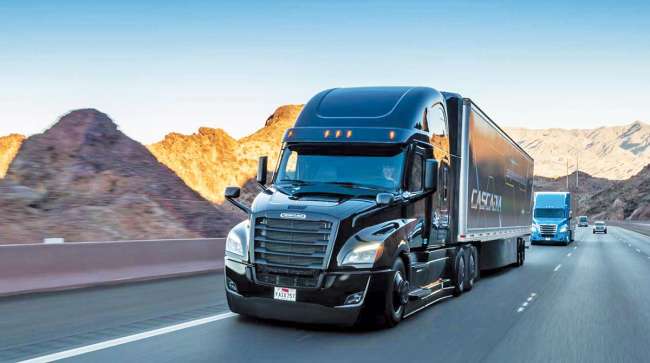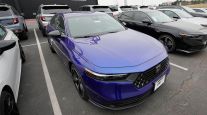Senior Reporter
NHTSA to Evaluate AEB System Errors on Certain Cascadias

[Stay on top of transportation news: Get TTNews in your inbox.]
The National Highway Traffic Safety Administration has launched a preliminary evaluation into a series of complaints involving automatic emergency braking system errors on certain Freightliner Cascadia trucks.
The announcement comes at a time in which the Federal Motor Carrier Safety Administration and NHTSA have launched a proposed rule mandating the use of automatic emergency braking systems on heavy trucks.
NHTSA’s Office of Defects Investigation has received 18 questionnaires that allege “errors in the automatic emergency braking system” on certain 2017-2022 Freightliner Cascadias.
“Drivers report activation of the AEB without an actual roadway obstacle, also known as a false-positive event,” a NHTSA report said. “The reports indicate the subject vehicle will apply the service brakes without warning or input from the driver. The applications range from momentary, partial application with little loss of speed to full application, which brings the vehicle to a complete stop in the travel lane.”

Grove
The questionnaires are entered into the agency’s consumer-complaint database, and forwarded to NHTSA technical staff for evaluation.
Freightliner is a brand of Daimler Truck North America, which is cooperating with NHTSA on the evaluation.
“Daimler Truck North America is fully committed to the development of life-saving technologies such as automatic emergency braking that have the potential to greatly improve roadway safety,” DTNA said through a spokesperson. “The company shares the same mission as NHTSA to reduce fatal crashes and serious injuries, and looks forward to continued collaboration with the agency to review AEB technology and the upcoming regulation and test procedures that are being developed for the industry by NHTSA.”
The agency said its Vehicle Research and Test Center tested a Freightliner Cascadia AEB-equipped vehicle. “During the steel trench plate scenario, the vehicle initiated hard braking when the plate was detected,” the report said. A steel trench plate is a large metal rectangle used to patch a hole in the roadway.
“I would say these are a known challenge for collision detection, because they’re very good at reflecting radar signals,” said Kevin Grove, director of safety and technology policy for American Trucking Associations, about the plates. “Some systems handle it better than others, and it is an issue if it brakes hard enough or long enough. A false alert with little or no braking is a problem for driver trust and acceptance but probably wouldn’t be a safety concern for NHTSA.”
NHTSA declined comment for this story, saying it does not comment on open investigations. However, in its report it noted, “DTNA stated that the steel trench plate was not representative of real-world driving. This preliminary evaluation has been opened to evaluate the issue and determine whether the alleged defect creates an unreasonable risk to safety.”
Want more news? Listen to today's daily briefing above or go here for more info
Top FMCSA officials in April said the agency also plans to introduce rulemaking proposals for heavy vehicle speed limiters, safe integration of automated driving systems and a safety fitness rule to identify unfit motor carriers.
In May, NHTSA announced an NPRM to require AEB systems on passenger cars and light trucks. The proposed rule is expected to dramatically reduce crashes associated with pedestrians and rear-end crashes.
NHTSA projects that the proposed rule, if finalized, would save at least 360 lives a year and reduce injuries by at least 24,000 annually. In addition, the AEB systems would result in reductions in property damage caused by rear-end crashes. Many crashes would be avoided altogether, it added, while others would be less damaging.




